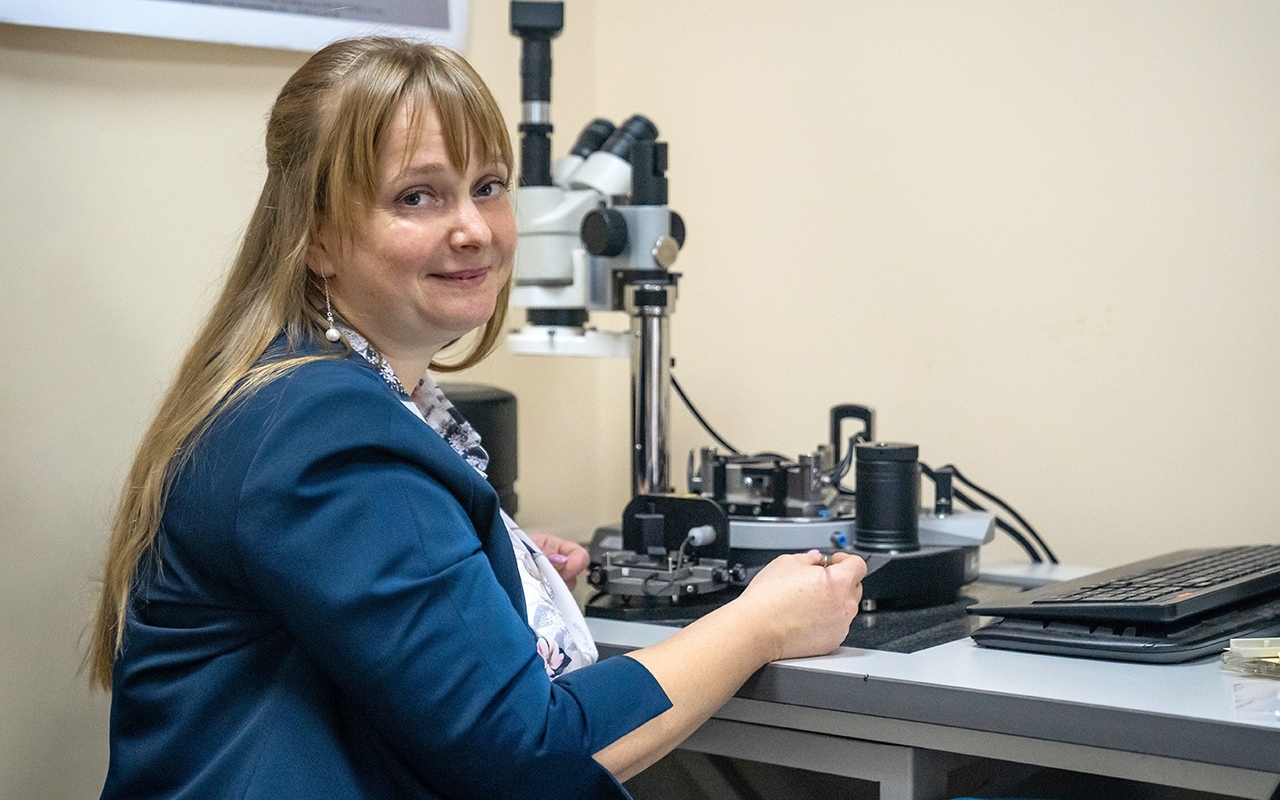A team of physicists from
Saint Petersburg Electrotechnical University "LETI" developed a method to synthesize a composite material from porous silicon with fullerene-based silver-containing inclusions evenly distributed in it.
The new composite can be used to develop elements for nanoelectronics and efficient emission cathode materials for accurate identification of the composition of unknown chemical compounds. The prototype surpasses all modern-day analogs because of its ability to create high-density electron flow at lower electric field intensity. The results of the study were published in the Electronics journal.
Electron energy loss spectroscopy (EELS) is a technique that helps accurately determine the atomic composition of a substance. When passing through a sample, electrons lose energy, and the lost amount directly correlates with the types of atoms in the substance. To pierce a sample with electrons, a high density of particle flow is required.
The higher the density of emitted electrons and the lower the threshold values of electric field intensity that is required for such emission, the more efficient is the method. Scientists can increase the accuracy of EELS by improving electron-emitting cathodes.
Scientists are especially interested in low-threshold (or cold) field cathodes that secure high-density emission flow at low electrical field intensity levels. The physics behind this phenomenon is still being discussed. Still, the materials capable of low-threshold emission can find application in electron-emitting devices. The low-threshold emission effect can be used not only to improve the EELS method, but also in nanoelectronics, namely in ultrahigh-frequency devices, field displays, quantum transistors, electronic microscopy, and nanolithography.
Generally, a material for low-threshold field cathodes consists of distributed conducting particles in a non-conducting matrix. In such structures, threadlike conducting channels can form between the base and particles, any two particles, or the particles close to the surface of the cathode and vacuum. Such channels stimulate electron emission even in weak electric fields.
A team of scientists from LETI, together with their colleagues from Peter the Great Saint Petersburg Polytechnic University and Saint Petersburg Mining University, synthesized and studied a new material for manufacturing effective low-threshold field cathodes.
The conducting particles in it were made of fullerene-based silver-containing materials and the non-conducting matrix—of porous silicon that was obtained using the electrochemical anode etching method. To create a porous silicon matrix with evenly distributed conducting particles, the team soaked it in a solution of fullerene-based silver-containing materials.
"We chose porous silicon as a promising material for low-threshold field cathodes because of its well-developed system of pores, large specific surface area, and porosity. Our sample contains branching pores with less than 50 nm in diameter. Thanks to special technological methods, we managed to introduce the conducting phase into the system of pore channels and distribute it evenly to secure identical material characteristics across the sample. It was a difficult task, but we succeeded," said Yulia Spivak, Assistant Professor at the Department of Micro- and Nanoelectronics of ETU "LETI."
The threshold electric field intensity value required for the sample to emit electrons was 2 V/um which is 20 times less than that of its modern-day analogs. Thanks to these properties, the new cathodes can be more durable, have a longer service life, and use the energy supplied to them more efficiently. Moreover, according to the authors of the work, incorporating other materials in the matrix could help them further reduce the required field intensity level.
"Julia wrote a thesis on the development of new porous materials. To them, one can add various particles such as substance clusters and nanoparticles, including cutting-edge carbon nanomaterial based on nanotubes or fullerenes. The work confirms that porous silicon materials with incorporated fullerenes have advance technical parameters and are promising for practical application. In the future, we plan to collaborate with scientists from other organizations to further develop this topic," explained Vyacheslav Moshnikov, Professor of the Department of Micro- and Nanoelectronics of ETU "LETI."
The scientists of the Department of Micro- and Nanoelectronics plan to further develop the field of new materials through mutually beneficial cooperation with colleagues from other organizations.
